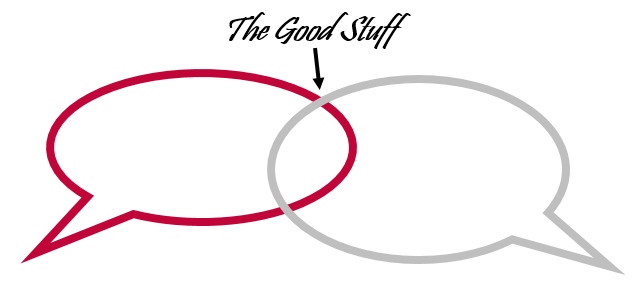In our last post, Sujit discussed the importance of gathering input from participants as a way to mitigate biases. In this post, I will explain why the sales team should be required participants and what their influence is on the forecasting process.
Sales people are always on the forefront fighting for your company. Not only do they meet the customers, but they’re also on the road and have a good feel for what lives in the outside world. Typically, they combine interpersonal skills with a solid knowledge of your portfolio. When the slightest hint for new opportunities makes it into their heads, it can simmer for months before they seize the moment and close the deal.
There’s a big challenge in translating this vast amount of market intelligence into a smooth and lean supply chain. Almost every demand planner has experienced the situation where unexpected demand disrupts the plan, and the account manager is surprised that nobody else saw it coming.
The demand planner, the scheduler, the plant manager as well as the logistics provider are all eager to get the inside knowledge the salesman has. However, sales people want to talk to their customers and sell the product. Although it is known that selling becomes easier after swift deliveries, it remains hard to convince the account manager about the added value of forecasting. “It is always wrong anyway” or “forecasting is like going to the casino, you might just as well roll the dice” are just two of the excuses some of us have heard.
Despite these hurdles, we will benefit from breaking through this first barrier and trying to understand what we can do to help the account managers. Too often, I’ve seen the forecasting process to be one-directional. The operations people tell a nice story about the benefits forecasting brings to the company, a few metrics and targets are thrown at the sales people, and off we go. Let’s sit back and see the forecast improve. This approach will increase the forecasting activity, but it remains to be seen if it also increases the forecasting accuracy.
There are a number of steps the demand planner can take to make forecasting easier. The most common argument against forecasting is a lack of understanding of how the business uses the input. Too often, the production schedulers and plant managers don’t trust the forecast and have their version. If you want commitment, it is crucial that people understand and see that their inputs are being used. This is not to say we should blindly follow whatever is being forecasted. On the contrary, if a demand planner reviews and challenges the forecast from the sales people, they will realize that the numbers matter. If it is shown that the forecast is being discussed in the S&OP meetings and inventory is being built to accommodate and assure reliable delivery when orders are being placed, sales people will recognize the benefit when talking to their clients and are complimented by the good service.
This is only the first step. We must also acknowledge that time is limited, and we want the sales people on the forefront selling our products. There is little value in reviewing all the materials in all packed versions for every single customer location, yet the directive “improve your forecast as it will help improve our service does not help the account manager.” As demand planners, we must strive to help sales people spend time on those items where they add value. Some rules of thumb can get you a long way:
- Do you have high volume, predictable materials? Make it clear that you as a demand planner will manage these, and you only want input from the sales people if things change drastically. Unless you’re selling diamonds, there is little value in changing the forecast from 100,010 to 100,000.
- Every portfolio has clutter such as customers that have been acquired or have stopped certain product lines. Cleaning the data is sometimes tedious but will improve the focus and hence save time in the long run.
- Not every material is crucial. Operations can identify those products that systematically create disruptions. Making it easy for the account manager to review these makes it more likely that they actually will.
- As almost everywhere, the Pareto principle will surface within forecasting. Account managers should be trained to focus on the 20% that is accountable for 80% of their volume.
The above shows there are benefits to be reaped by both parties when transitioning from a one-directional approach to a collaborative forecasting process. Account managers will spend fewer hours on it while operations has a more reliable forecast and gets that glimpse of the inside knowledge it so eagerly wants. Our next blog will highlight a few techniques to get your sales team involved in the process. Be sure to check back!
To read more about forecasting techniques download Critical Skills for the Business Forecaster by Sujit Singh.
Like this blog? Follow us on LinkedIn or Twitter and we will send you notifications on all future blogs.






